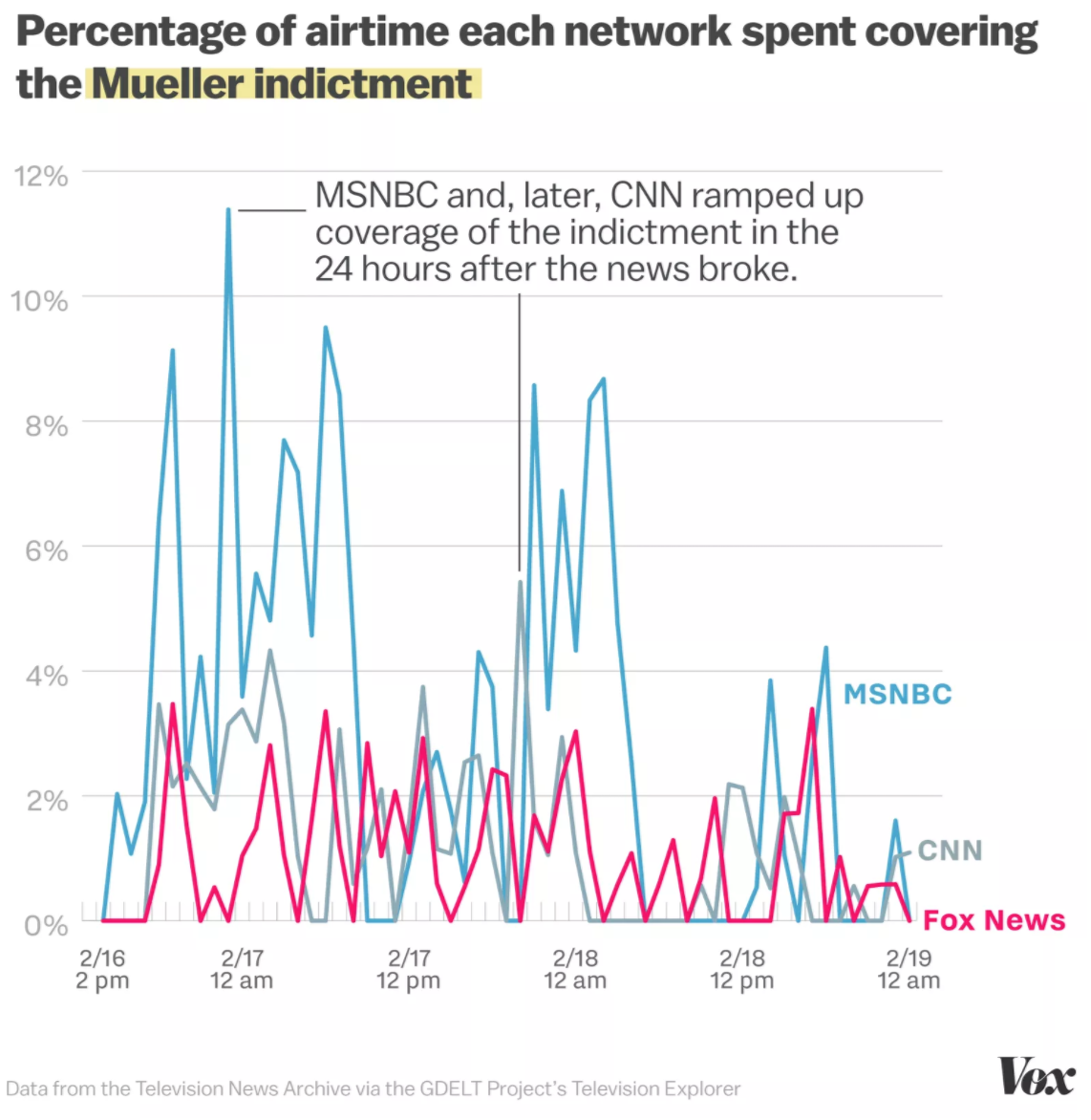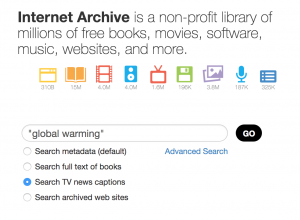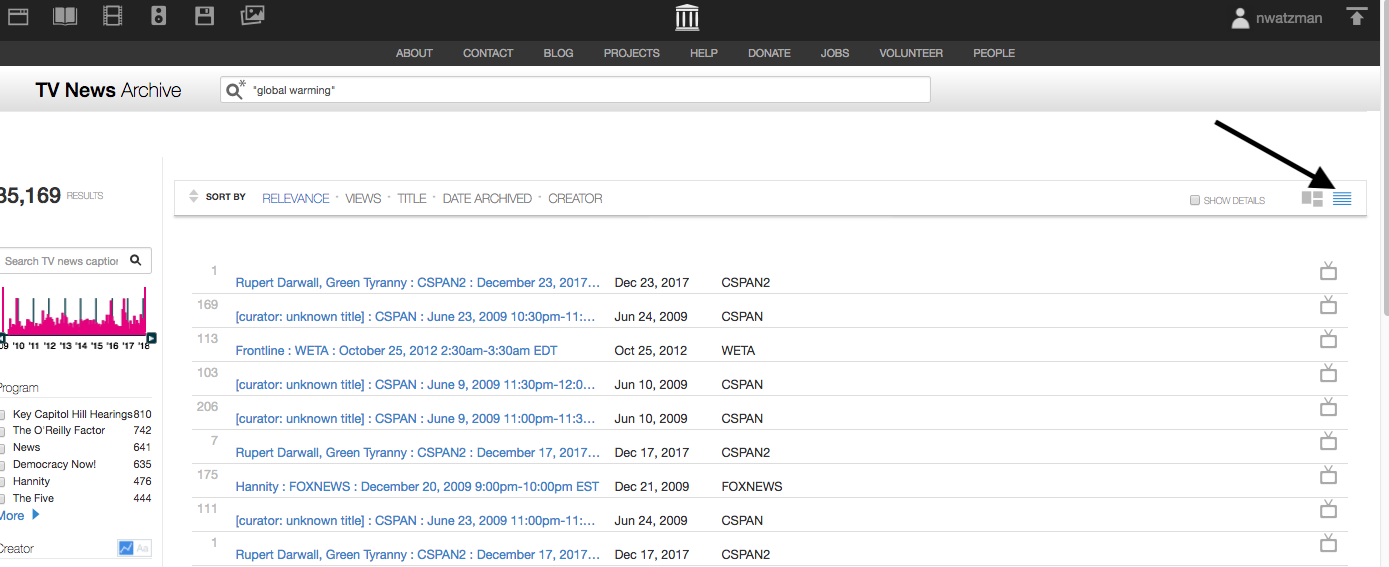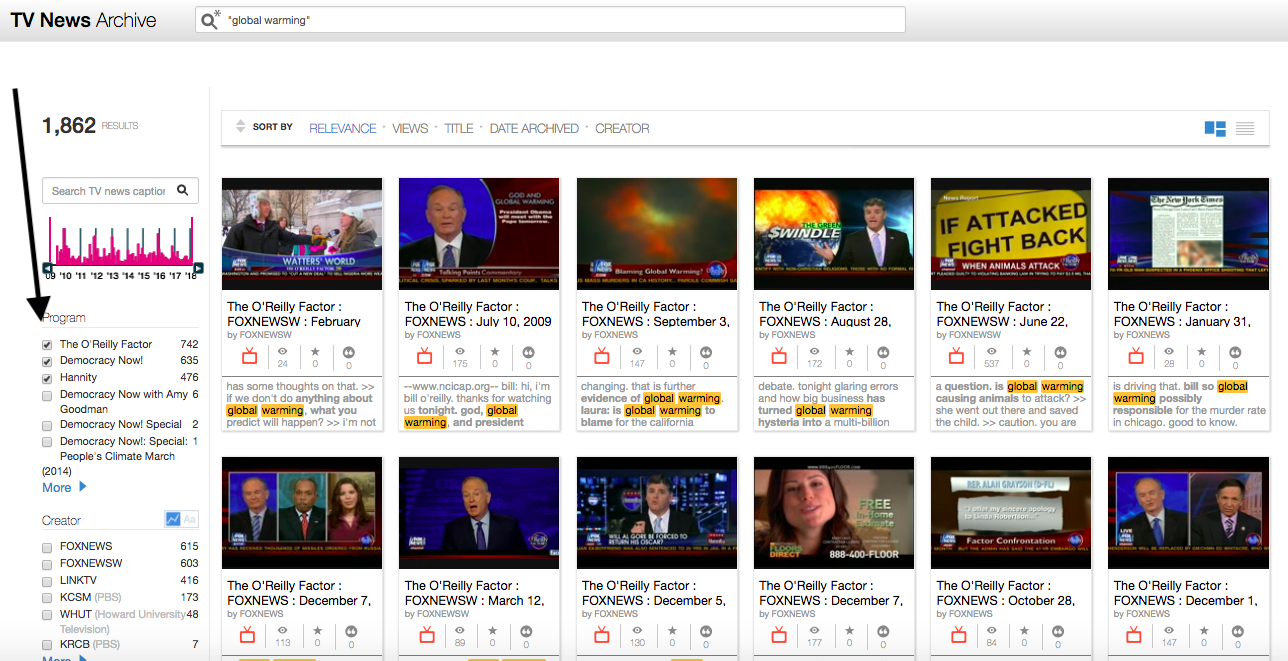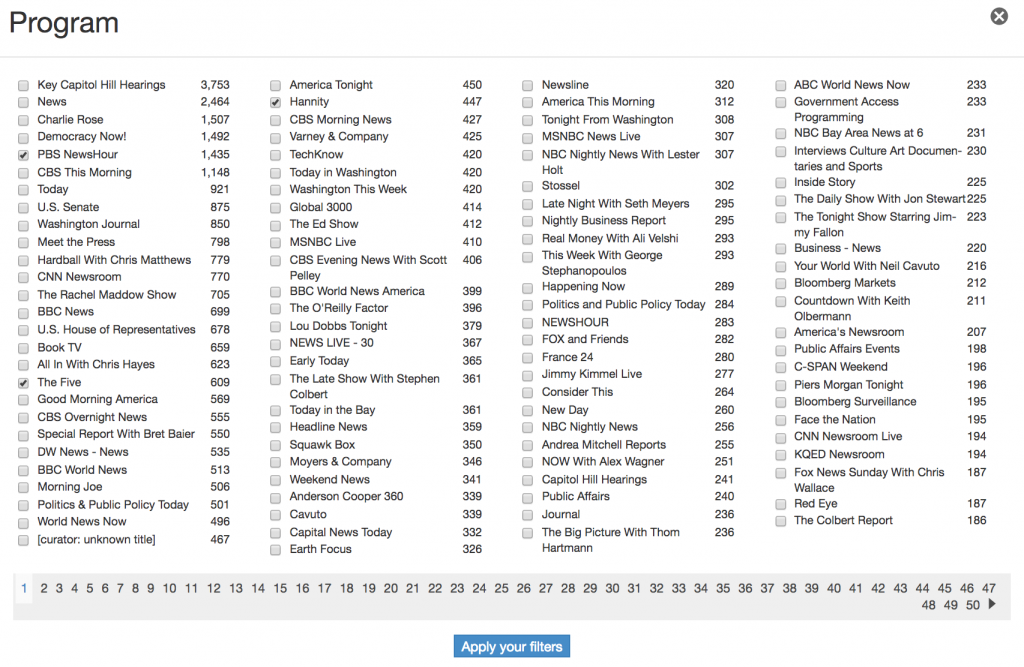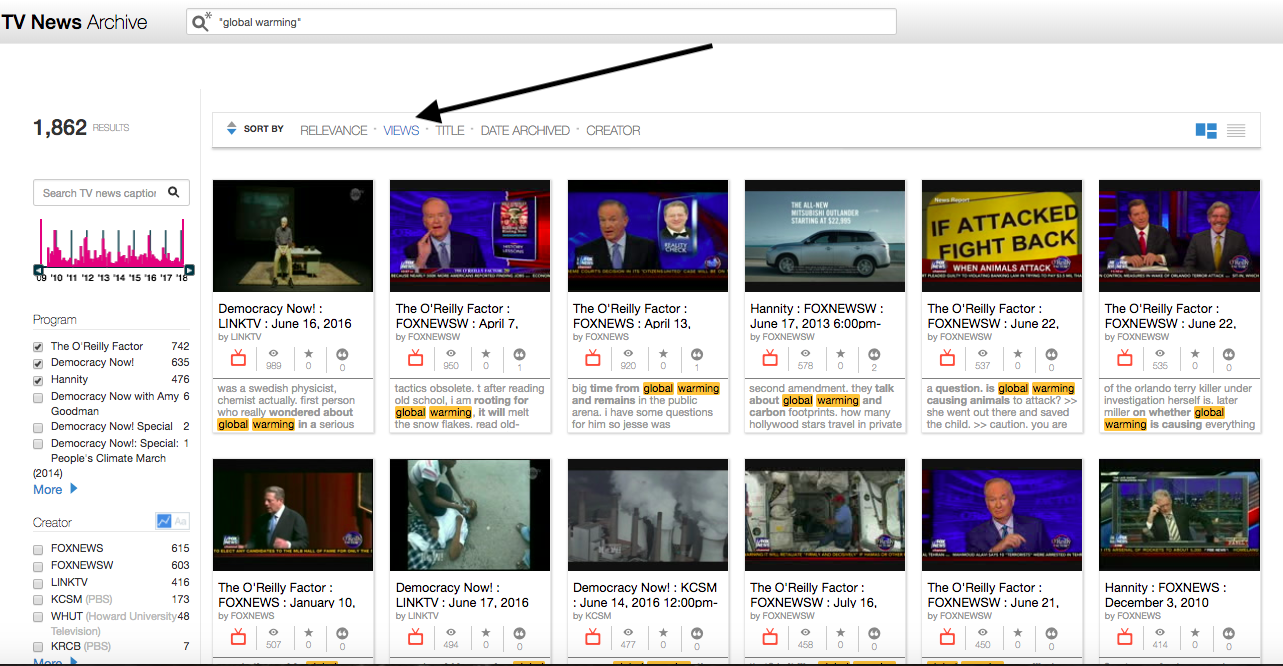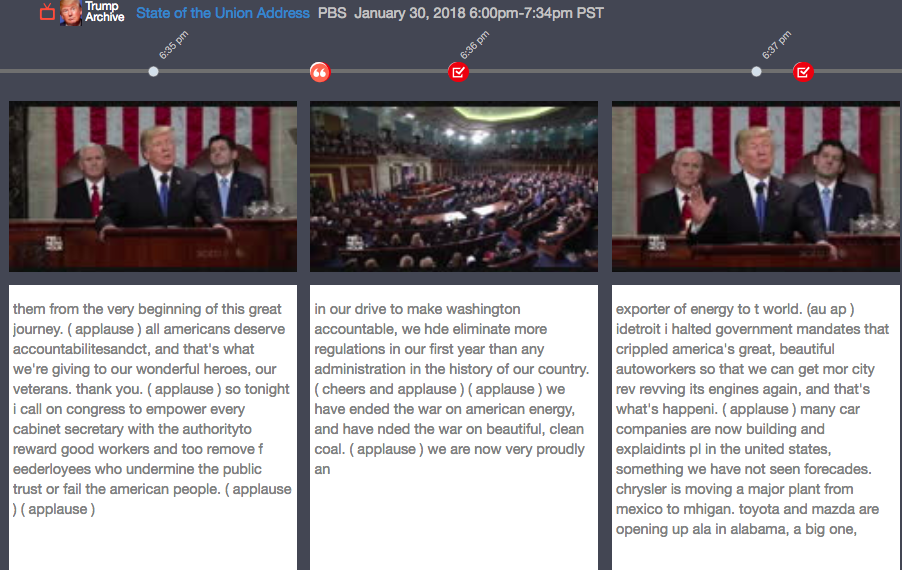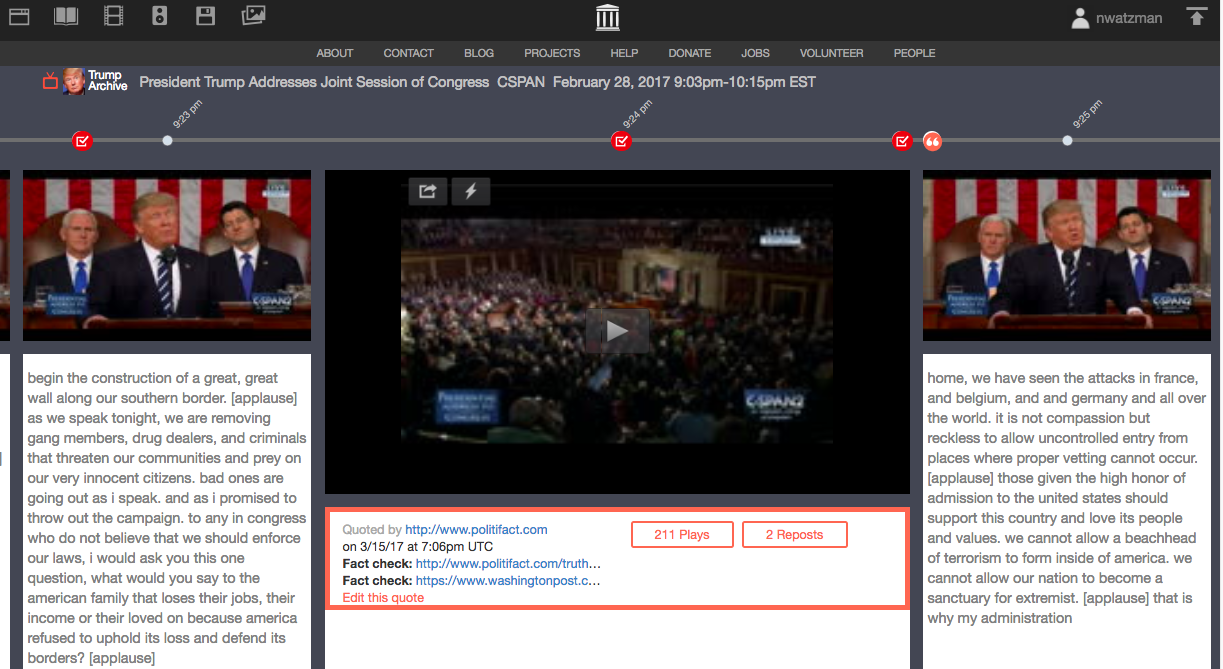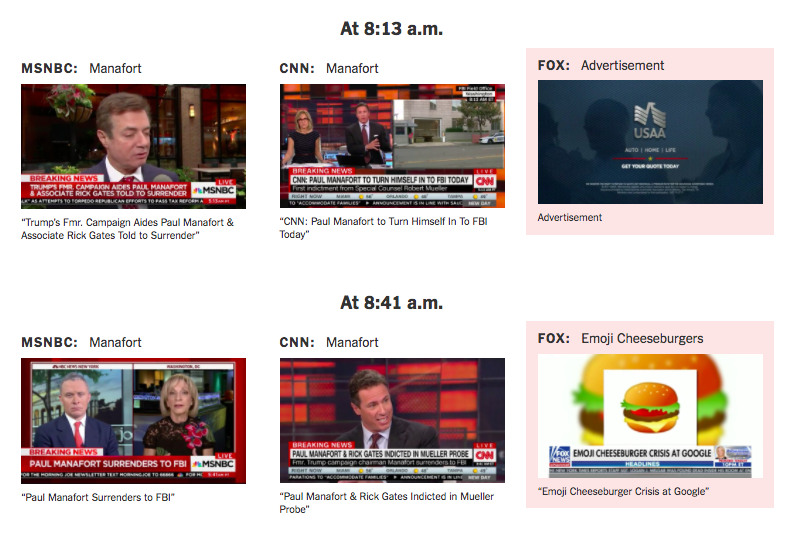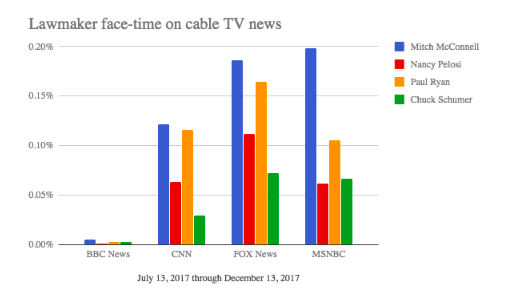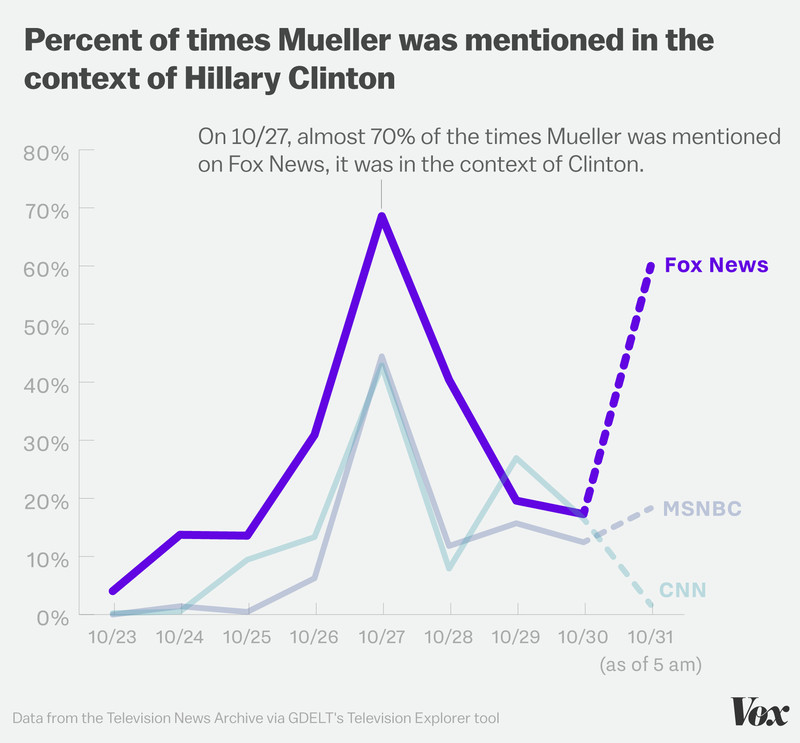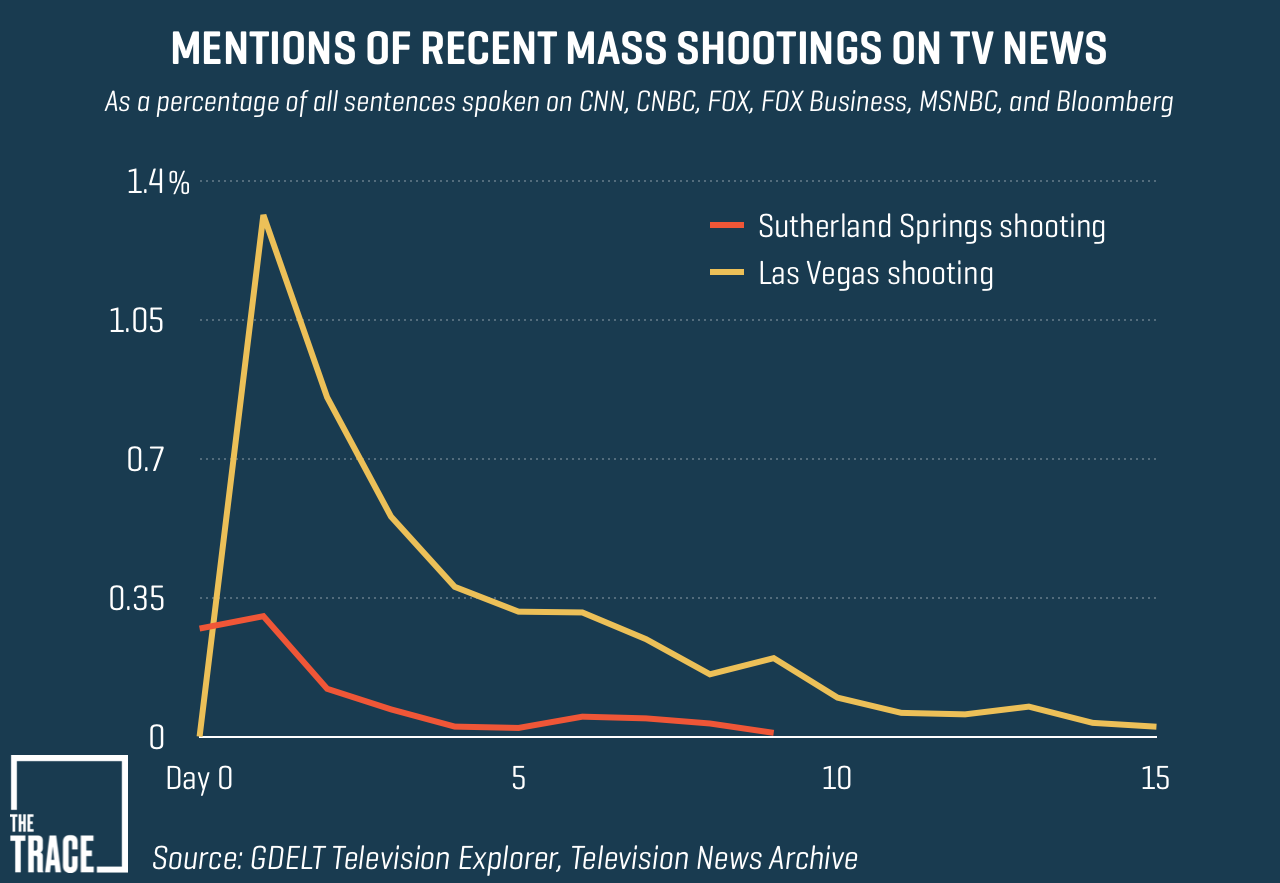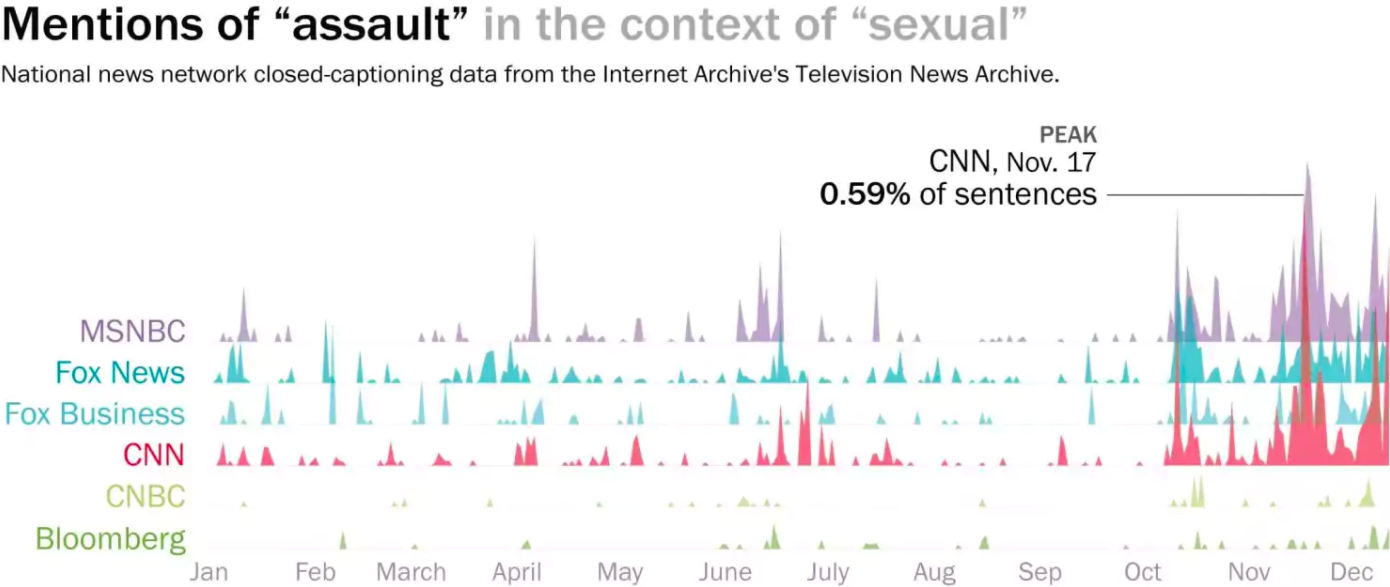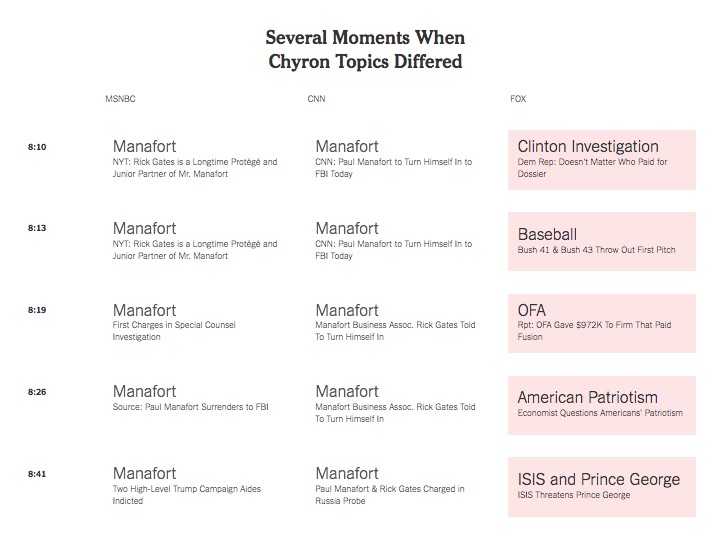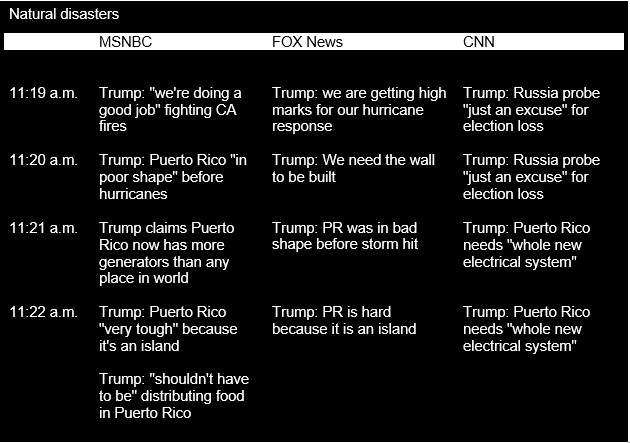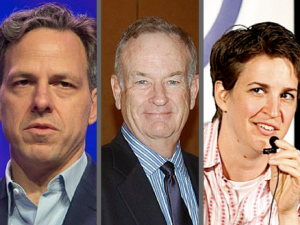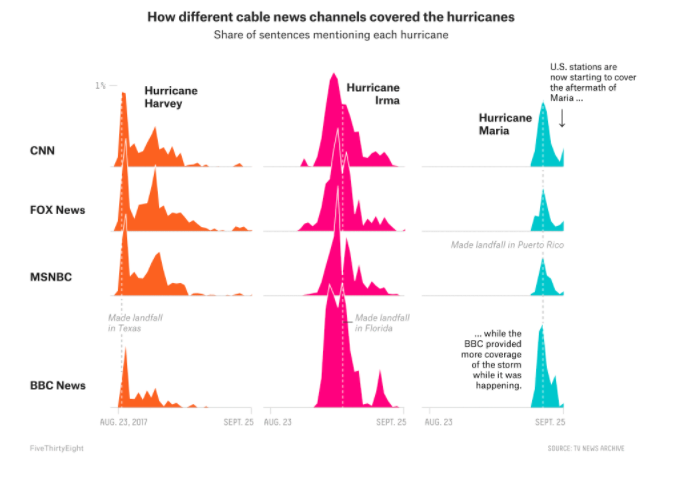A round up on what’s happening at the TV News Archive by Katie Dahl and Nancy Watzman.
Explore Television Explorer 2.0
Television Explorer, a tool to search closed captions from the TV News Archive, keeps getting better. Last week GDELT’s Kalev Leetaru added new and improved features:
- 163 channels are now available to search, from C-Span to Al Jazeera to Spanish language content from Univision and Telemundo.
- Results now come as a percentage of 15 second clips, making comparisons between simpler.
- The context word function for searches is similarly redesigned, counting a matching 15-second clip as well searching the 15 second clips immediately before and after, helping to alleviate some previous issues with overcounting.
- You can now see normalization timelines on the site, with newly available data about the total number of 15-second clips monitored each day and hour included in your query.
Take the revamped Television Explorer for a spin.
Here’s what we found when we used the new tools to track the use of the term, “cryptocurrency.” The rapid ascent, and sometimes fall, of the value of cryptocurrencies such as bitcoin have led to rises and dips in TV news coverage as well. In May 2017, international TV news channels began to run stories featuring the term, rapidly increasing in November and peaking just last week with BBC News. Television Explorer shows that Deutsche Welle led the pack ahead of BBC News and Al Jazeera in covering cryptocurrency. Among US networks, Bloomberg uses the term more than twice as often as Deutsche Welle. A search of the term bitcoin shows a similar trajectory, with CNBC coverage spiking December 11, 2017, a few days before bitcoin hit its historic peak in value to date.
Florida high school shooting TV news coverage shows familiar pattern
Within a broader analysis of how responses to the most recent school shooting compare with others, The Washington Post’s Philip Bump used TV News Archive closed caption data using GDELT’s Television Explorer to examine the pattern of use of the term “gun control” on CNN, Fox, and MSNBC. “After the mass shooting in Las Vegas last October, a political discussion about banning ‘bump stocks’ — devices that allowed the shooter to increase his rate of fire — soon collapsed.” “So far, the conversation after Parkland looks similar to past patterns.”
Fact-check: Trump never said Russia didn’t meddle in election (Pants on Fire!)
“I never said Russia did not meddle in the election”
Reacting to the indictments of Russian nationals by Special Counsel Robert Mueller, President Donald Trump wrote, “I never said Russia did not meddle in the election, I said, ‘It may be Russia, or China or another country or group, or it may be a 400 pound genius sitting in bed and playing with his computer.’ The Russian “hoax” was that the Trump campaign colluded with Russia – it never did!”
Fact-checkers moved quickly to investigate this claim.
The Washington Post’s Fact Checker, Glenn Kessler: “According to The Fact Checker’s database of Trump claims, Trump in his first year as president then 44 more times denounced the Russian probe as a hoax or witch hunt perpetuated by Democrats. For instance, here’s a tweet from the president after reports emerged about the use of Facebook by Russian operatives, a key part of the indictment: ‘The Russia hoax continues, now it’s ads on Facebook. What about the totally biased and dishonest Media coverage in favor of Crooked Hillary?’”
PolitiFact’s Jon Greenberg: “Pants on Fire!” The president “called the matter a ‘made-up story,’ and a ‘hoax.’ He has said that he believes Russian President Putin’s denial of any Russian involvement. He told Time, ‘I don’t believe they (Russia) interfered.’”
Vox on Fox (& CNN & MSNBC): Mueller indictment, Florida shooting
In an analysis of Fox News, CNN, and MSNBC during the 72 hours following the announcement of the indictment of 13 Russians, Vox’s Alvin Chang used TV News Archive closed captioning data and the GDELT Project’s Television Explorer to show “how Fox News spun the Mueller indictment and Florida shooting into a defense of the president.” Chang uses the data to show that “[I]nstead of focusing on the details of the indictment itself, pundits on Fox News spent a good chunk of their airtime pointing out that this isn’t proof of the Trump administration colluding with Russia.”
TV news coverage and analysis in one place
Scholars, pundits, and reporters have used the data we’ve created here in the TV News Archive in ways that continue to inspire us, adding much-needed context to our chaotic public discourse as seen on TV. All that content is now in one place, showcasing the work of these researchers and reporters who turned TV news data into something meaningful.
Follow us @tvnewsarchive, and subscribe to our weekly newsletter here.


